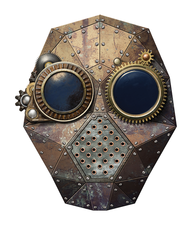Explore gaming on the Lakka console
DIY Retro Console

© Lead Image © donatas1205, 123RF.com
The Lakka Linux distribution comes with everything you need to play retro games and lets you install games directly in the user interface. All you need is a Raspberry Pi and, ideally, a simple gamepad.
In the pandemic, its not just Netflix series that are booming, but computer games, too. However, state-of-the-art gaming consoles like Nintendo Switch or PS5 are expensive, which makes Linux distributions like Lakka [1] all the more worthwhile. It even runs on the Raspberry Pi 3, which currently retails for $35 (EUR35, £34). In other words, you only pay a fraction of what you would have to fork out for a high-end console from Nintendo or Sony for a retro console that you can build yourself.
DIY retro game consoles require very little manual work. You simply plug the Raspberry Pi into a suitable enclosure and connect it to the monitor or TV. With Lakka, you don't even need a keyboard and a mouse; input can be managed with a gamepad like the Logitech F310 [2]. However, you will not want to do without a keyboard for convenience sake. It not only makes it easier to enter text, but you can also assign additional functions to the keys.
Features
The Lakka distribution is based on the LibreELEC [3] media player. The operating system does not need much space on the hard disk, with a pleasingly compact ISO image of about 400MB. LibreELEC also ensures that all files, including the kernel, are made current during the update, removing the need for you to install individual packages. RetroArch [4] is used as the graphical user interface, which results in Lakka self-configuring thanks to RetroArch's autoconfig feature. Gamepads, for example, are ready for use straightaway.
[...]
Buy this article as PDF
(incl. VAT)
Buy Linux Magazine
Subscribe to our Linux Newsletters
Find Linux and Open Source Jobs
Subscribe to our ADMIN Newsletters
Support Our Work
Linux Magazine content is made possible with support from readers like you. Please consider contributing when you’ve found an article to be beneficial.

News
-
Parrot OS Switches to KDE Plasma Desktop
Yet another distro is making the move to the KDE Plasma desktop.
-
TUXEDO Announces Gemini 17
TUXEDO Computers has released the fourth generation of its Gemini laptop with plenty of updates.
-
Two New Distros Adopt Enlightenment
MX Moksha and AV Linux 25 join ranks with Bodhi Linux and embrace the Enlightenment desktop.
-
Solus Linux 4.8 Removes Python 2
Solus Linux 4.8 has been released with the latest Linux kernel, updated desktops, and a key removal.
-
Zorin OS 18 Hits over a Million Downloads
If you doubt Linux isn't gaining popularity, you only have to look at Zorin OS's download numbers.
-
TUXEDO Computers Scraps Snapdragon X1E-Based Laptop
Due to issues with a Snapdragon CPU, TUXEDO Computers has cancelled its plans to release a laptop based on this elite hardware.
-
Debian Unleashes Debian Libre Live
Debian Libre Live keeps your machine free of proprietary software.
-
Valve Announces Pending Release of Steam Machine
Shout it to the heavens: Steam Machine, powered by Linux, is set to arrive in 2026.
-
Happy Birthday, ADMIN Magazine!
ADMIN is celebrating its 15th anniversary with issue #90.
-
Another Linux Malware Discovered
Russian hackers use Hyper-V to hide malware within Linux virtual machines.

